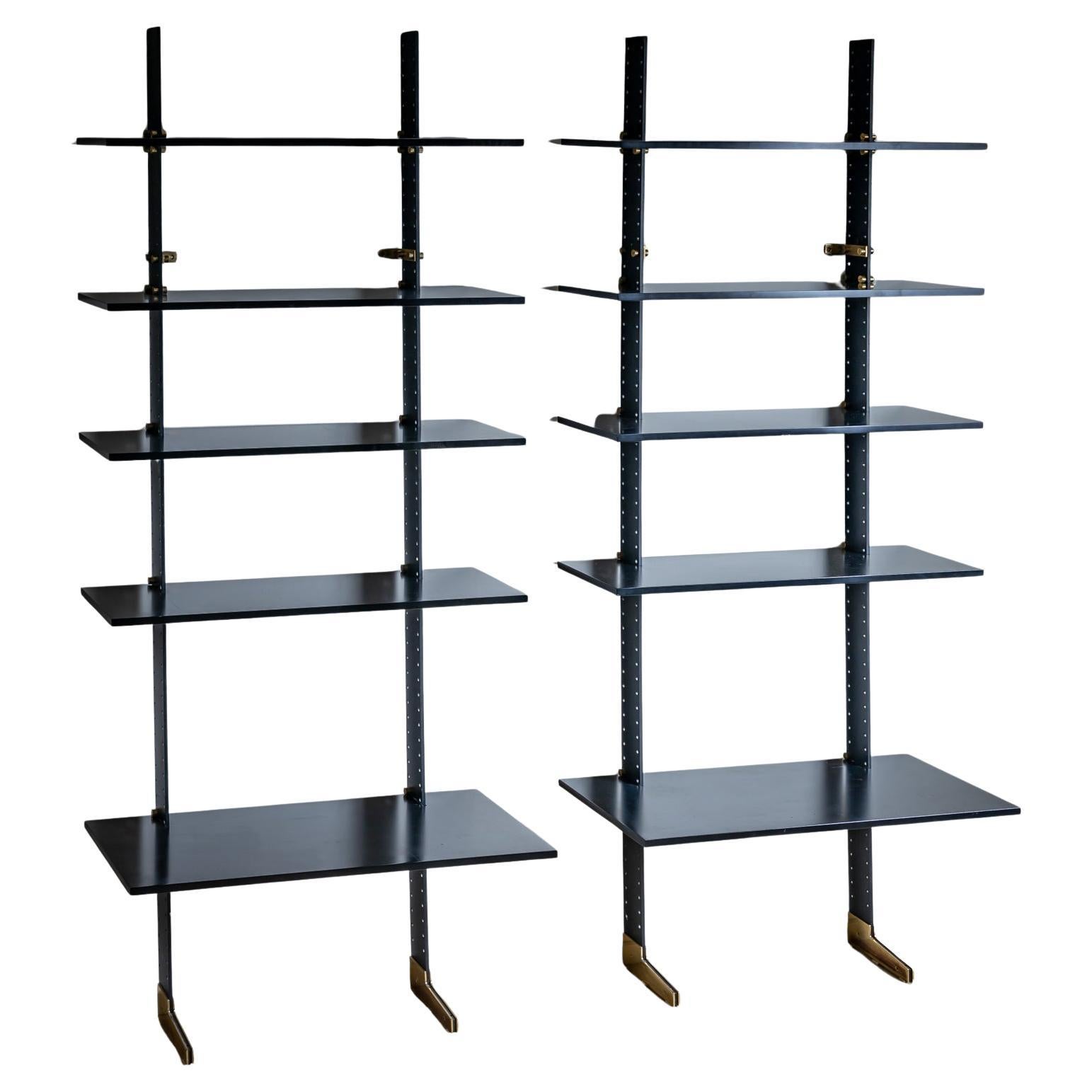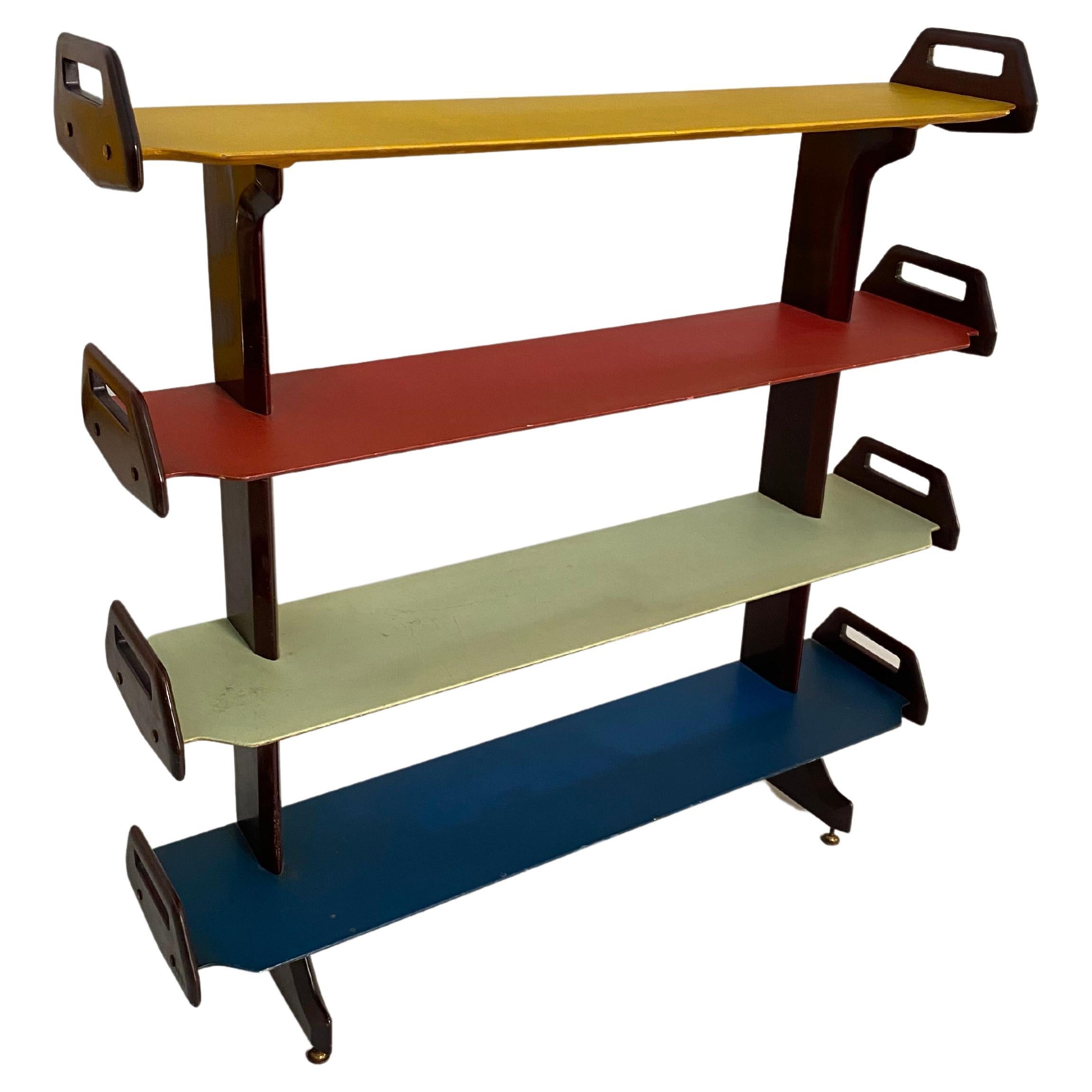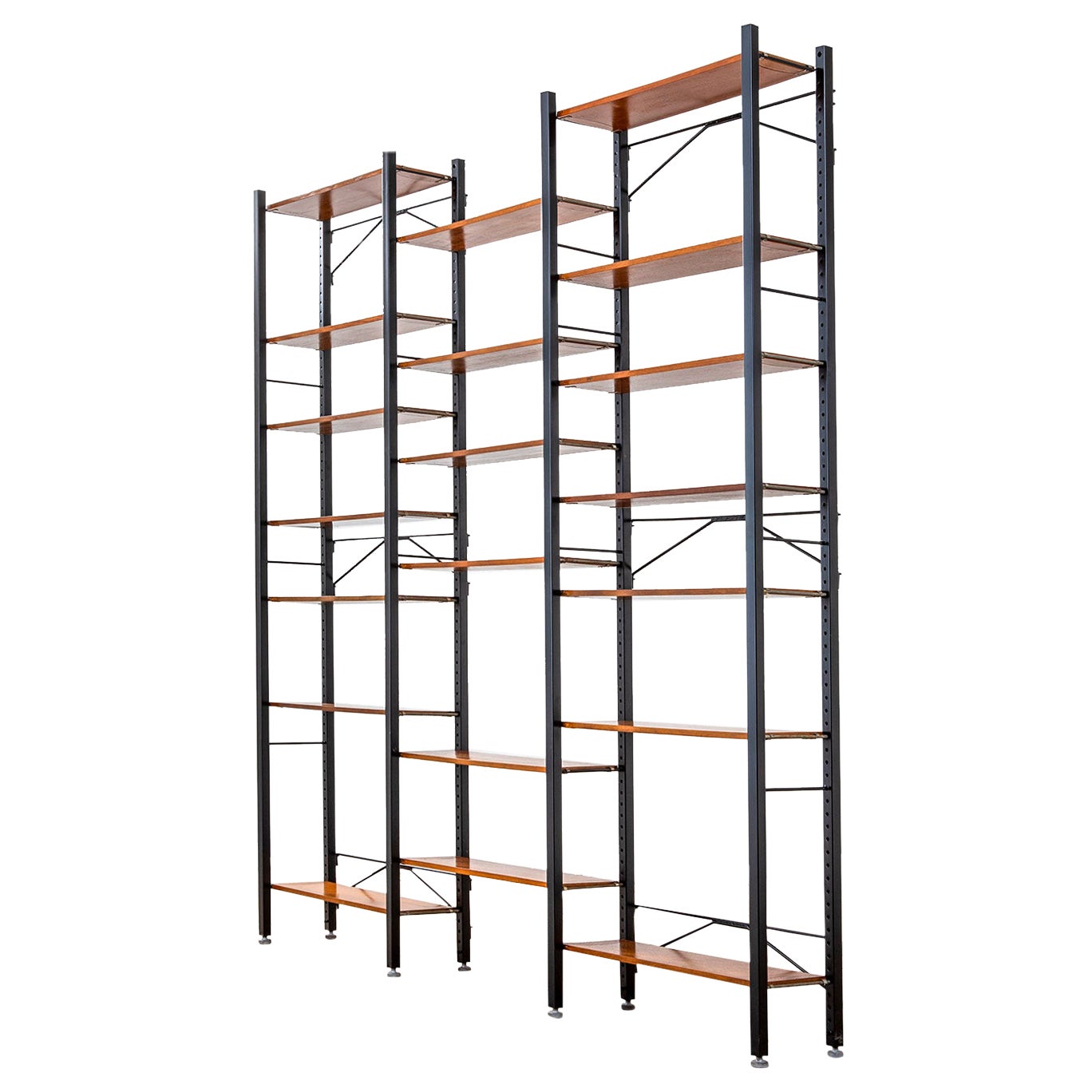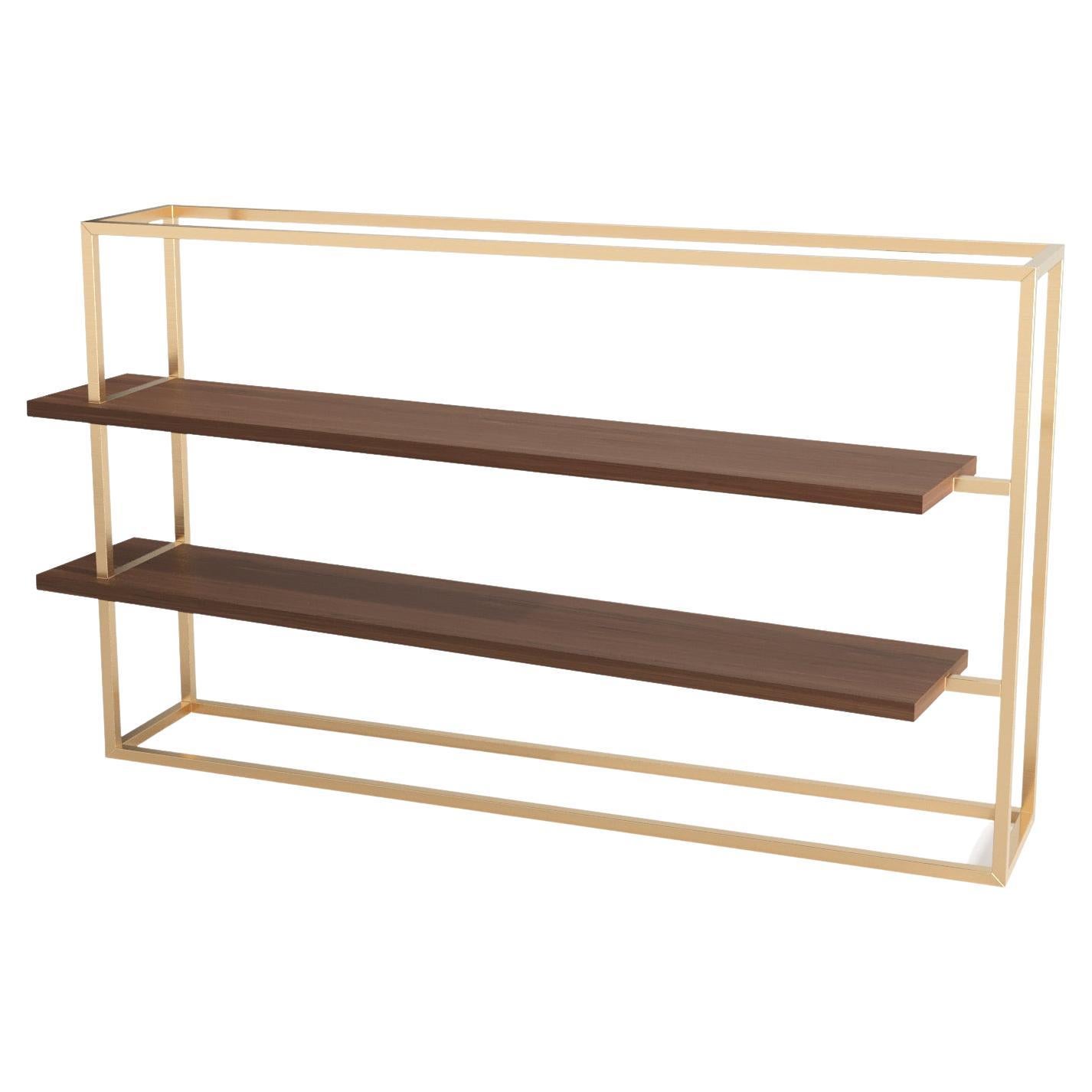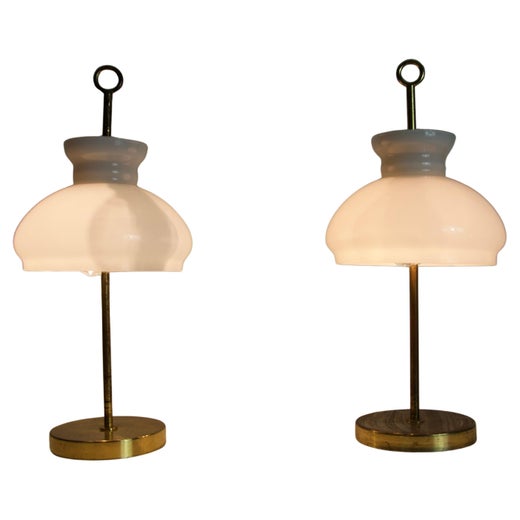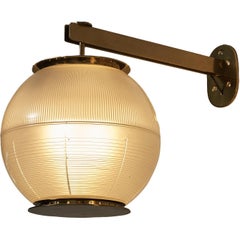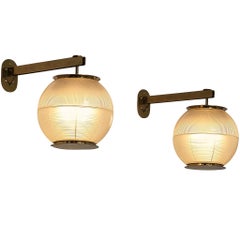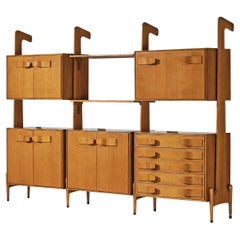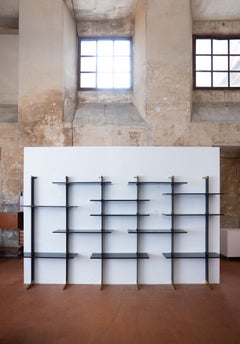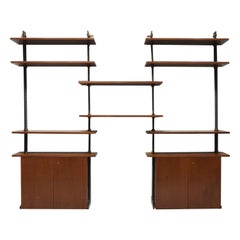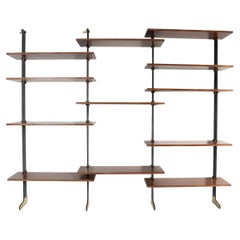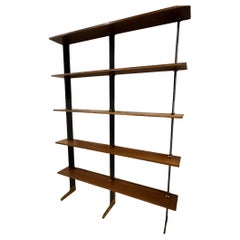
Ignazio Gardella for Azucena 'Lib 2' Bookcase in Iron, Brass and Wood
View Similar Items
Ignazio Gardella for Azucena 'Lib 2' Bookcase in Iron, Brass and Wood
About the Item
- Creator:Ignazio Gardella (Designer),Azucena (Manufacturer)
- Dimensions:Height: 86.82 in (220.5 cm)Width: 73.23 in (186 cm)Depth: 8.67 in (22 cm)
- Style:Mid-Century Modern (Of the Period)
- Materials and Techniques:
- Place of Origin:
- Period:
- Date of Manufacture:1950s
- Condition:Wear consistent with age and use. Every item Morentz offers is checked by our team of 30 craftspeople in our in-house workshop. Special restoration or reupholstery requests can be done. Check ‘About the item’ or ask our design specialists for detailed information on the condition.
- Seller Location:Waalwijk, NL
- Reference Number:Seller: 501169001stDibs: LU933144945072
Azucena
Vintage Azucena furniture is elegant and inviting — the esteemed mid-century Milanese manufacturer’s wall lights, armchairs and side tables, which are marked by simple symmetry and thoughtfully contrasting materials, can likely be found in the living rooms of design lovers all over Italy.
Azucena was founded in 1947 by three leading figures of 20th-century Italian architecture: Luigi Caccia Dominioni, Ignazio Gardella and Corrado Corradi Dell’Acqua. The trio initially established Azucena in order to furnish the interiors of buildings they’d designed but found a robust business opportunity in manufacturing individual pieces from those collections for postwar consumers. And as the company founders borrowed the brand name from a conniving character in the Giuseppe Verd opera Il Trovatore, it is appropriate, then, that the furniture for which Azucena is known is practical but exudes a hint of playfulness.
The best of Italian modernism combines cheekiness and bold functionality with provocative and thoughtful design, and Azucena is deeply rooted in that tradition. While its brass-and-walnut mid-century-modern-era dining tables and stackable coffee tables — created by the likes of Dell’Acqua and Vico Magistretti — are exceptionally unobtrusive in small spaces and framed in clean lines, Dominioni designed chunky, enveloping armchairs during the 1970s upholstered in striking red fabric.
Among Azucena's most successful and iconic designs is also Dominioni's most famous piece of furniture: the minimalist Catalina chair. After it debuted at the Milan Triennial in 1957, the Catalina chair, with its generously curving enameled steel frame and plush leather cushion, became an instant sensation. Dominioni’s other enduring designs for Azucena include the Monachella lamp, the ABCD armchair and the versatile Cilindro ottoman.
Italian furniture manufacturer B&B Italia acquired Azucena in 2018 and has reissued a number of designs from the legendary brand’s portfolio, such as the Imbuto lamp, the Catalina armchair and the Cavalletto table.
On 1stDibs, find vintage Azucena lighting, tables, seating and more.

Established in 2006, Morentz has a team of approximately 55 restorers, upholsterers, interior advisers and art historians, making it a gallery, workshop and upholstery studio, all in one. Every day, a carefully selected array of 20th-century furniture arrives from all over the world at the firm’s warehouse, where the team thoroughly examines each piece to determine what, if any, work needs to be done. Whether that means new upholstery or a complete restoration, Morentz's aim is always to honor the designer’s intention while fulfilling the wishes of the client. The team is up to any challenge, from restoring a single piece to its original glory to furnishing a large-scale hotel project.
More From This Seller
View AllVintage 1950s Italian Mid-Century Modern Wall Lights and Sconces
Brass
Vintage 1950s Italian Mid-Century Modern Wall Lights and Sconces
Brass
Vintage 1960s Italian Mid-Century Modern Armchairs
Brass, Nickel
Vintage 1960s Italian Mid-Century Modern Bookcases
Brass
Vintage 1960s Belgian Mid-Century Modern Bookcases
Brass
Vintage 1950s Italian Mid-Century Modern Bookcases
Brass
You May Also Like
Vintage 1950s Italian Mid-Century Modern Bookcases
Metal, Brass
Mid-20th Century Italian Mid-Century Modern Bookcases
Mahogany
Vintage 1950s Italian Mid-Century Modern Bookcases
Metal
Vintage 1950s Italian Bookcases
Brass
Vintage 1970s Italian Bookcases
Steel
Mid-20th Century Italian Shelves
Brass, Steel





